How I Do It: Putting the FUN Back in FUNctional
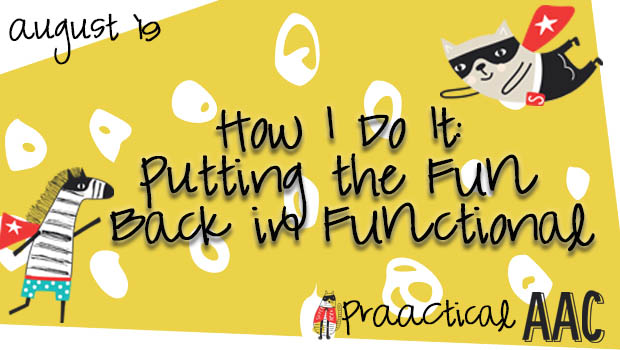
In the US and some other countries, we’re starting a new school year and SLP Amanda Samperi is here to get us off to a good start by sharing her experiences an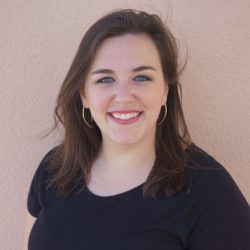 d suggestions for engaging AAC activities. After graduating from Penn State, Amanda worked for several years as an SLP in school, home, and medical settings. She has presented on AAC-related topics st ASHA, an IEE Electrical Safety Workshop, and at the AAC in the Cloud Conference. Amanda hopes to continue sharing her knowledge and experiences about AAC through her blog, AAC is where it’s AT. Today, she introduces us to a series of posts that focus on creating fun AACtivities for language learning.
d suggestions for engaging AAC activities. After graduating from Penn State, Amanda worked for several years as an SLP in school, home, and medical settings. She has presented on AAC-related topics st ASHA, an IEE Electrical Safety Workshop, and at the AAC in the Cloud Conference. Amanda hopes to continue sharing her knowledge and experiences about AAC through her blog, AAC is where it’s AT. Today, she introduces us to a series of posts that focus on creating fun AACtivities for language learning.
::::::::::::::::::::::::::::::::::::::::::::::::::::::::::::::::::::::::::::::::::::::
Back-to-School with AAC: Putting the FUN back in FUNctional
There is something special about this time of year – students are trying on their back-to-school outfits, school supplies are magically discounted beyond belief, and parents are crying tears of joy at the thought of sending their children back to school for the next ten months!
As an SLP working in the schools, I still get that same excited, happily anxious feeling in my stomach just before starting back. After sorting through the Target Dollar Spot, getting my desk organized, and attempting draft 1 of 5738 of my schedule, it’s time to get my therapy plans going! The questions is… how do I get started??
This article is Part 1 of 5 to help you get Back-to-School with AAC! Today, we’re looking at putting the FUN back in FUNctional.
What exactly does that mean?
School societies (SLPs included) are highly data-driven. This isn’t a bad thing – data is very important for us to understand a student’s baseline and demonstrate progress. However, in order to achieve progress, we must provide effective and efficient instruction! This can and will look different for each student. However, it’s very important that we as educators do not fall into the trap of continually testing our students, rather than teaching. This means that we must provide enriching, engaging experiences for students to learn through, rather than matching answers to questions on a worksheet.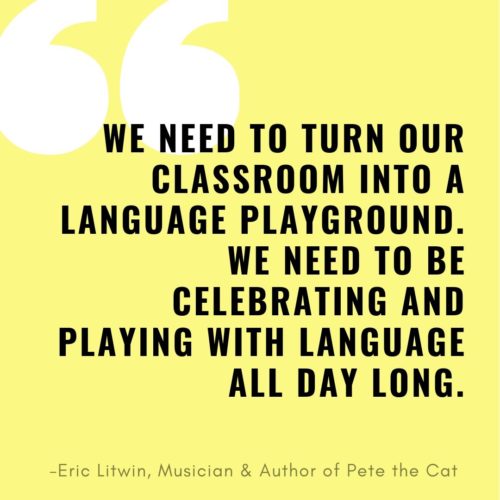
ALL students need to be able to learn in a fun and creative way before being tested on their knowledge. This is especially true for those using something complex and complicated like AAC. It’s vital that all areas of language are being taught in a fun, hands-on approach to the greatest extent possible. According to Dr. Karyn Purvis, “…it takes approximately 400 repetitions to create a new synapse in the brain unless it’s done in play, in which case it takes between 10-20 repetitions.” While each child is different and unique, we know that research supports play- and relationship-based therapy interventions (e.g., Koegel & Koegel, 2006; Greenspan, Weider, & Simons, 1998)
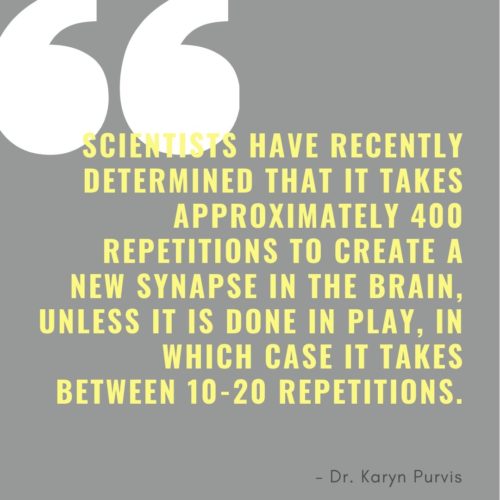
I’ve seen this in my own therapy session many, many times. When a skill is presented in a drill format, the scenario is often contrived, the student is typically bored, and generalization of the skill can be difficult. However, when the skill is built into a fun, motivating activity, participation typically requires significantly less prompting and generalization of the skill the target skill takes less time.
Here’s what it looks like in my therapy sessions.
I was working with a kindergarten student on the core words “here” and “where.” This activity could have easily been targeted with a printed activity from the internet by matching questions with their answers (i.e., “Where is the sun? It’s here in the sky.”). However, that’s one quick activity that difficult to expand upon, tough to generalize, and leaves both the student and SLP bored, frustrated, and with 28 minutes left of therapy! Instead, we took a simple book, ‘Where’s Spot?’ and made several great activities based off of it.
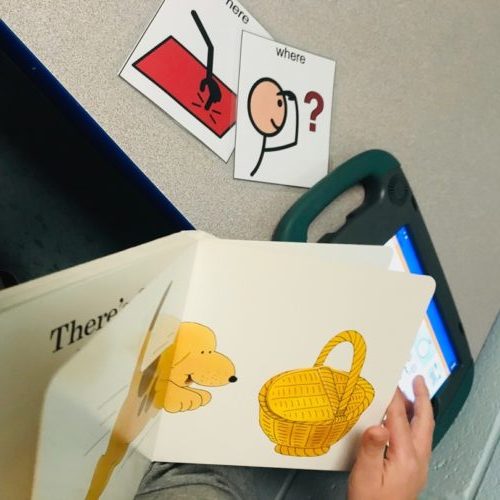
- First, we isolated the target core symbols from the classroom core board and located the words in the student’s device.
- I then introduced the book, during which my brilliant student connected the image of the dog to his background knowledge and found the name of his family’s dog.
- We then read the book, while I modeled words and phrases using the core vocabulary “where” and “here.” This could work with any book with hidden flaps. Kids LOVE to investigate books with flaps!
- After that, we played a game of hide-and-seek within the tiny room. It was a great chance for him to use these core words expressively in a fun game!
- We then borrowed the classroom dollhouse. The student chose several preferred toys, which we took turns hiding in the house while the other had to find them. There’s something so pure about modeling the phrases “Where’s Batman? Here he is!” on a 6-year-old boy’s AAC device!
- The student brought in an instructional assistant, who also got to play a round of hide-and-seek with us. This allowed me to demonstrate how to model the core vocabulary while playing this game.
- The staff continued to read the book throughout the week in the classroom and model the targeted core words. They also continued to play the games across the substantially-separate and inclusion settings, and with a variety of peers!
After just two days of reading the book with adult modeling and playing hide-and-seek with the core vocabulary, the student began to read the book to me using the targeted core words!! How’s that for progress?
Try to jump into the mindset of someone the age of your student.
Not sure how to get started? Well, if you’re working with a 6-year-old student, ask another 6-year-old what they like to do for fun! Check out the kids on the playground – what’s entertaining?
Check in with your OT and PT. Can you involve sensory and/or motor activities? Utilizing movement is another great opportunity for the student to make generalizations with vocabulary. Plus, sensory and motor experiences tend to be highly motivating!
You can also check out fabulous resources on the internet, such as Facebook, Pinterest, Instagram, and more. Here are some personal suggestions:
- Laura Mize, M.S., CCC-SLP, “Teach Me To Talk”
- Carole Zangari, Ph.D, CCC-SLP, “PrAACtical AAC”
- Amanda ML Samperi, M.S., CCC-SLP “AAC is where it’s AT” (shameless plug)
- Lauren Enders, M.A., CCC-SLP, https://www.pinterest.com/lasenders/
In summary: When working with kids, it’s vital to become one yourself. If they’re having fun, the learning will follow. Play. Laugh. Model. Laugh some more. Until next time,
Amanda ML Samperi, MS, CCC-SLP Founder of AAC is where it’s AT
- Facebook: https://www.facebook.com/AACiswhereitsAT/
- Instagram: https://www.instagram.com/aaciswhereitsat/
References:
ASHA. Spoken Language Disorders. Retrieved from https://www.asha.org/PRPSpecificTopic.aspx?folderid=8589935327§ion=Overview
Koegel, R. L., & Koegel, L. K. (2006). Pivotal response treatments for autism: Communication, social, and academic development. Baltimore, MD: Brookes.
Greenspan S. I., Weider, S., & Simons, R. (1998). The child with special needs. Reading, MA: Perseus Books.
Filed under: Featured Posts, PrAACtical Thinking
Tagged With: back to school, classroom, How I Do It, school
This post was written by Carole Zangari

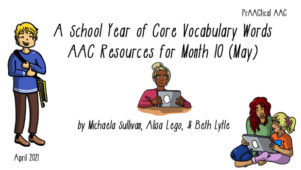
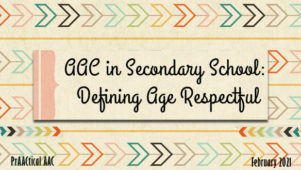
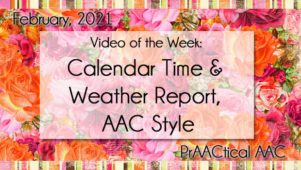
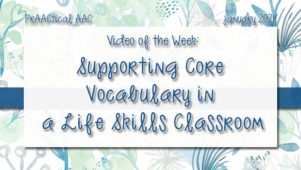
3 Comments
Hi! Is there a citation for that Karyn Purvis quote?
Hi Taylor!
In regards to the Karyn Purvis quote, there is not a direct citation, as the post containing this quote from Court Appointed Special Advocates® has since been taken down. According to the Texas Christian University, it is believed that Dr. Purvis said this quote at a training, not directly in her research. Unfortunately, she passed away shortly after that training. Her research is very powerful in using play to connect with children, especially those in neglected, abusive, or otherwise difficult situations (please visit https://child.tcu.edu/#sthash.997Oaugh.dpbs for more information). I think the Dr. Purvis quote can be used anecdotally to give one researcher’s perspective on vocabulary acquisition during play. However, I would not cite the data in this quotation as bottom line. For more concrete and research-based citations, please see the examples listed at the end of that paragraph (e.g., Koegel & Koegel, 2006; Greenspan, Weider, & Simons, 1998) or consult the ASHA portal.
Taylor, I’m not familiar with Purvis’ work, but I have seen the same point made by others e.g., Desautels https://www.butler.edu/file/299194/download